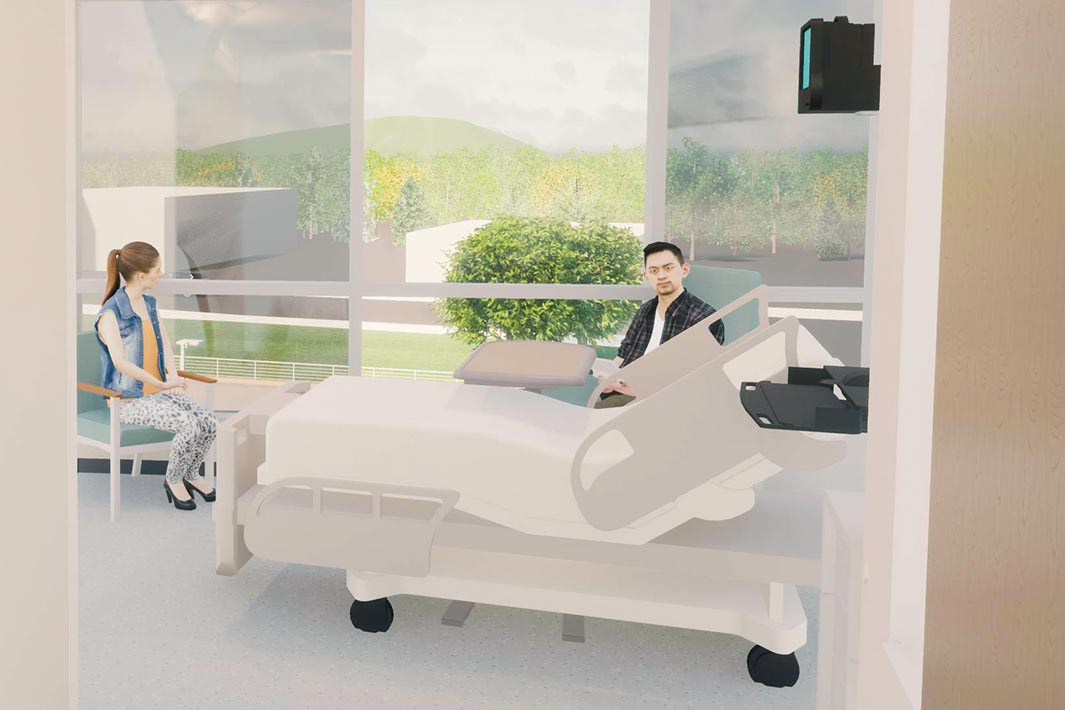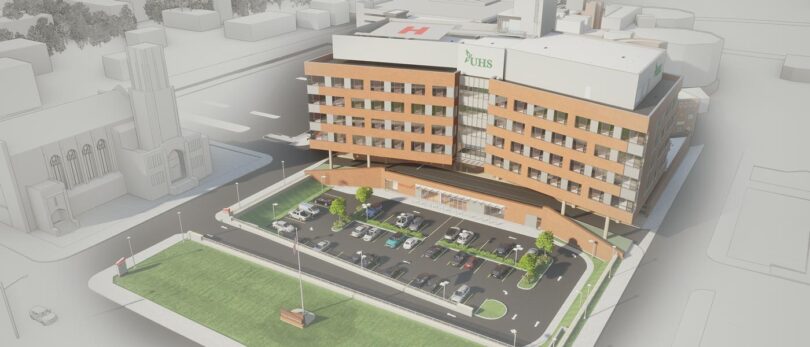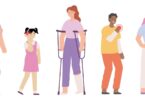Southern Tier residents who drive down State Route 17 can’t help but notice the new six-story addition to the UHS Wilson Medical Center campus that’s under construction, a tower that already has altered the Johnson City skyline. The first thing to catch their eye is likely the project’s sheer immensity: It includes more than 183,000 square feet of what will soon be state-of-the-art healthcare architecture, featuring 120 private rooms, a new trauma center and emergency room that will be three times larger than the current one, as well as a new imaging center that will include a dedicated on-site MRI suite.
Those features are headliners, to be sure. Each will improve the standard of care patients expect to receive at UHS. Yet the Wilson Main Tower’s greatest impact will go far beyond the infrastructure that’s visible from the highway. It will focus on how the new building will better support the UHS culture and caregivers, enabling staff to demonstrate UHS’ core values of compassion, trust, respect, teamwork and innovation as never before.
“The new facility is being built as a healing environment that is restorative, not only for our patients but also for our caregivers — less congested, with more natural light and a more positive experience overall,” said Peggy Thomas, MSN, RN, CENP, vice president for Nursing and chief nursing officer at UHS Hospitals.
Ms. Thomas is most excited about some of the less-heralded features of the new building that will support her nursing team and enhance the patient experience. These include such innovations as dedicated spaces for caregivers to gather, a computer in every room, and digital whiteboards that enable caregivers, patients and families to sync up regarding critical information, such as a patient’s post-discharge diet, medication and rehabilitation plan.
By making it easier for nurses to record patient data and share information with patients and families, the new facility will enable caregivers to spend their time more productively. “They will have more time to interact with patients, creating more meaningful relationships,” Ms. Thomas says. “That’s what healthcare delivery is all about.”
Improving the Patient Experience
The addition of 120 private rooms with private bathrooms also is likely to make a substantial impact on the experiences of patients and caregivers alike. Shared rooms are often darker because of the screens and shades used to separate patient areas, whereas the rooms in the tower will be open and flooded with natural light from large windows.
Shared rooms also pose challenges for caregivers, according to Jeffrey Gray, MD, internist and vice president for Hospital-Based Services at UHS and chief medical officer of UHS Delaware Valley Hospital. For example, he said sharing a serious diagnosis in front of another patient can be difficult. A tight space can also be challenging when several providers and care team members must assemble quickly to provide quick-response care.
“The number of ways that a private room improves the patient experience of care really can’t be overemphasized,” Dr. Gray noted.
Another benefit of the new facility is speed. Even though the Wilson Main Tower will add 183,000 square feet to the UHS Wilson campus footprint, the time required to perform several essential tasks will be shortened dramatically. For example, patients needing highly urgent, lifesaving care will receive it seven to nine minutes faster because of the proximity of the tower’s helipad on the rooftop to the Emergency Department on ground level through a dedicated elevator.
The number of ways that a private room improves the patient experience of care really can’t be overemphasized.”
—Jeffrey Gray, MD
Similarly, cardiology patients can easily access MRIs within the new tower rather than going to an off-site facility in an ambulance. That’s especially important for inpatients. MRI is rapidly becoming a test of choice to evaluate the heart due to the excellent resolution it provides without using any radiation. Nationally, the number of cardiac patients who receive MRIs has increased twentyfold in the last five years, according to Afzal ur Rehman, MD, PhD, senior vice president of Cardiovascular Services at UHS.
By combining simplified imaging logistics with enhanced patient privacy and a lighter, more modern environment, UHS is poised to benefit from added capabilities and an environment that is less stressful for patients, families, providers and staff.
“Anything we can do to take the stress level down for the patient and family in the recovery period — that actually helps the patient recover sooner,” Dr. Rehman said.

The new Wilson Main Tower will include 120 private rooms with their own bathrooms to ensure more patients can be comfortable during their stay.
Recommitting to Core Values
Patients and their families won’t be the only people attracted to an environment suited to providing high-level care. The Wilson Main Tower also is likely to serve as a recruitment and retention driver for UHS. That’s true partly because people are drawn to state-of-the-art work environments. The new facility’s design specifically supports UHS’ ambition to be a healthcare system defined by innovation, collaboration and compassionate care.
“Our infrastructure is the body language of our organization,” said Sheri Lamoureux, vice president for Human Resources and chief human resources officer of UHS Inc. and UHS hospitals. “The work environment has a big impact on how people feel about their organization and about the care they’re providing. This facility will help us re-emphasize our values throughout UHS.”
A thriving healthcare system is important, not only for UHS’ patients, staff and providers but also for the broader Southern Tier community, because healthcare is a crucial civic asset to support the area’s growth and health. The caregivers at UHS don’t just serve that community; they’re part of it. They, too, get excited when they drive across town and see the new tower rising from the ground.
“It shows everyone’s commitment toward UHS continuing to move forward and investing in the care of our community,” said Amine Hila, associate chief medical officer and vice president of Medical and Academic Affairs at UHS. “It’s very important and uplifting, and I think it’s going to be a huge change.”





